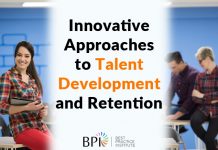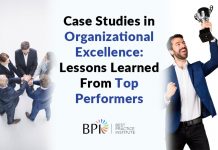A technical competency model is typically displayed in a pyramid format, as shown below, and is typically split into 5 tiers. It’s the upper technical, industry specific tiers, 4 and 5 which elevate a competency model to the status of a technical competency model. This is an example of a technical competency model for the Energy Sector prepared by CareerOneStop, (a division of the US Department of Labour).
If you are looking to introduce a technical competency model you may be interested in some of the implementation best practices of organizations who have successfully adopted this model.
- Lead from the top but incorporate input from job holders
As distinct from a job analysis implementation which tends to work from the bottom up – gleaning information from job holders – a successful technical competency model implementation focuses on interviewing senior leaders. The Energy Sector model shown above was developed by a collaboration between industry leaders in the Energy Sector and executives in the US Department of Labor.
Microsoft, who has developed technical competency models for its internal professions, worked closely with a group of senior leaders in each professional area to get it done. However, they adopted a hybrid approach by not confining their analysis to senior leaders as they also interviewed and surveyed relevant job incumbents from the broader population. Observations from a number of organizations suggest that this hybrid approach of leading the competency model implementation from the top – to ensure executive buy-in – is best followed up with input from job incumbents at all relevant levels.
The European Space Agency (ESA) technical competency model was developed from interviews and focus groups with over 120 staff members to prove a breadth and depth of analysis.
- Future Scenario Analysis. Many leading organizations are enriching their technical competency modeling analysis with future scenario analysis. This approaches concedes that we cannot know the future and therefore settles with developing several detailed potential future scenarios and then uses this to inform and update their technical competency model. This approach, called Project Horizon, was adopted by multiple federal agencies back in 2006. They interviewed 100s of executives and subject matter experts to develop 5 detailed scenarios that the US government could face. Such future scenarios could be where China and Asia, (and not the US), dominate the world economy or where terrorism and security are the biggest issues. Implementation involved putting together organizationally representative focus groups of about 10 organization subject matter experts for each scenario. The focus groups read the scenarios in advance of the meeting and then used structured brainstorming to develop potential competencies that could be needed.
3.Feasibility Study. When the ESA developed their technical competency model they conducted a feasibility study. This involved:
- defining a methodology to describe the technical competencies associated with the various posts and/or required by future needs;
- assessing the reusability of the ESA Competency Dictionary developed in recent years and used by some Directorates for manpower planning. It contains definitions for most important technical functions at ESA, such as Propulsion Engineer, Micro-electronics Engineer and Thermal Engineer;
- verifying the suitability of the HR Management System (HRMS) software already in use by HR to support properly the CBM data model and functions;
- validating the selected approach through the development of a prototype.
The study involved reviewing the best practices used in similar organizations such as CERN and the OECD. Once the model was defined as far as Level 3, it was decided to verify the possibility of including Level 4 competencies, which are technical competencies. They then had to verify the suitability of the HRMS software to manage the task. A small prototype was developed for 12 positions where the technical and behavioural competencies were identified.
The technical, managerial and behavioral selection criteria were obtained from the interview report forms and the qualification requirements and task descriptions were taken from the Vacancy Notices”[excerpt from ESA white paper]
- Using a Behavioral Interview Event Interview. Organizations such as Microsoft have made use of the Behavioral Event Interview to implement technical competency modeling, and it was used in the example given above. In this approach, executives are interviewed to discover detailed information on past job situations to understand the behavioral themes that led to success or failure. This information is used to develop the competency model. It’s a re-application of the typical Behavioural Interview used in hiring.
5. The Model should distinguish high-performing employees from average employees. Another key aspect of technical competency modeling is that the best implementations rate the extent to which the model distinguishes high-performing employees from average employees. Microsoft used several criteria to identify outstanding and average employees when developing its competency model. This was time-consuming and made the process more complex but it paid off for them. This targeted outstanding competencies and served as an incentive for personal development. Within three years, leadership performance had improved to such a level that they needed to raise the bar again and develop further target competencies for outstanding performers.
6. Implementing the Competency Model. As mentioned earlier the technical competency model has many applications across the talent management spectrum and once developed it should not be allowed to gather dust. The Boeing Company has successfully incorporated its competency models into multiple HR processes including structured interviews, reductions in force and training. And, Microsoft has incorporated competency models into their Mid-Year Career Discussions.
At Indiana Precision Technology (a subsidiary of Honda) the technical competency model was used to develop a “pay-for-skills” program that incorporated training, appraisal, promotion and pay systems.
CERN used its technical competency model in interesting ways. Below is an excerpt from CERN’s white paper showing how they have used their technical competency model.
Practically speaking, the competency model will provide us with a reference framework and a common language with which to discuss performance and, in this respect, the sample indicators supporting each competency will help us to understand what are the types of behaviour that are valued by the Organization.
…at the end of the next annual exercise, the results of our work objectives will be expressed in terms of “what?” (achievements) and “how?” (competencies demonstrated or needing further development). There will be no rating of competencies as such during the performance appraisal…
The Competency Model will have an impact not only on the performance appraisal but also on many other HR activities, such as the selection criteria used during recruitment; the criteria used in the middle and at the end of the probation period; the assessment criteria used during the limited duration to indefinite contract process and the criteria used in the career path guide during promotion exercises. – excerpt from CERN white paper.
References
1.Energy Sector Competency Model by Careeronestop: http://www.careeronestop.org/competencymodel/info_documents/tag.pdf
2: Energy sector collaboration http://serc.carleton.edu/integrate/programs/workforceneeds/competencies.html
3.European Space Agency: http://www.esa.int/esapub/bulletin/bulletin126/bul126k_donzelli.pdf
4.Project Horizon: http://www.osif.us/images/Project_Horizon_Progress_Report.pdf
5.Microsoft, Boeing and Indiana Precision Technology: http://blogs.wayne.edu/ioadventures/files/2013/12/Doing-Competencies-Well-Best-Practices.pdf
6.CERN: http://cds.cern.ch/journal/CERNBulletin/2011/03/News%20Articles/1321176?ln=en











